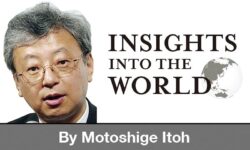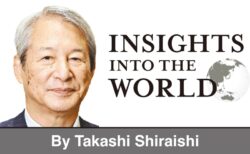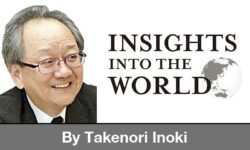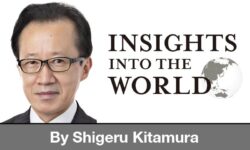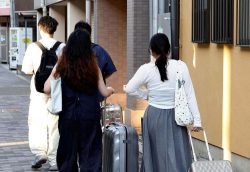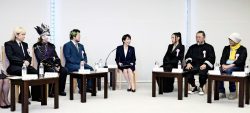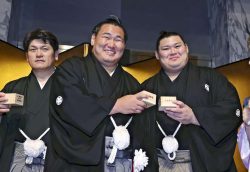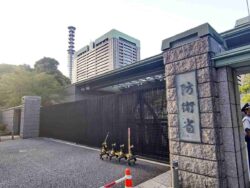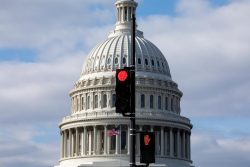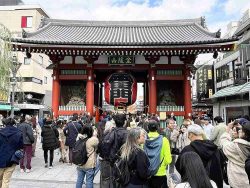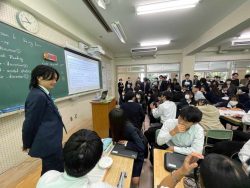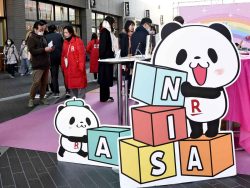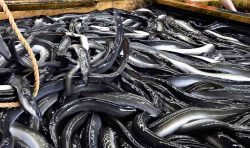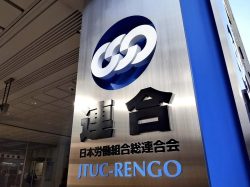11:00 JST, January 31, 2025
Donald Trump is now in his second term as U.S. president. The world has changed considerably over the course of eight years, since he was inaugurated the first time in 2017.
In his National Security Strategy, released in December 2017, Trump laid out for the first time his view that the world was in an age of “great power competition.” By that time, China, under the leadership of President Xi Jinping, had already been making progress toward its goal of “fuguo qiangjun” (rich state and strong army), while Russia had annexed Ukraine’s Crimean Peninsula three years earlier — in 2014.
Trump’s notion of great power competition made clear that strategic competition with China and Russia had emerged as the biggest security challenge for the United States. Since then, the “great power competition” has accelerated. It is worth looking at how competition has intensified and in what areas.
One obvious area affected is the geopolitical arena. Since Russia invaded Ukraine in February 2022, the war there has dragged on. In the Middle East, the Islamic organization Hamas staged a terrorist attack on Israel in October 2023, and conflict has been escalating between Israel and the Iran-backed armed groups of Hamas, Hezbollah and others. A full-fledged war may break out between Israel and Iran.
In Asia, China has been actively trying to change the status quo in the areas surrounding Taiwan and in the South China Sea, employing so-called gray-zone tactics to the maximum extent possible.
Iran, North Korea and China are each supporting Russia in their own way. The four countries effectively form a “Eurasian alliance,” posing a challenge to the U.S.-led “free world.” Countries in the Global South, for their part, are basically going their respective ways to pursue their national interests, touting “my country first” policies, without taking sides between the two alliances.
The other area of competition is economic security — or to put it more generally, competition in technology and industry.
The first Trump administration focused on security in the fifth-generation (5G) mobile communication system — which is indispensable for high-speed, large-scale connectivity — and semiconductor manufacturing. At the same time, restrictions were imposed on exports of advanced technologies, as well as on foreign companies’ investment in key technologies and infrastructure, governmental procurement from foreign adversaries, and data sharing and research collaboration with those countries. The administration specifically added Chinese tech giant Huawei and others to the so-called Entity List, banning their access to U.S. technology.
The administration of President Joe Biden then initiated a new industrial strategy called “Investing in America,” which offered massive investments in clean energy, semiconductor manufacturing, artificial intelligence and quantum computing, among other areas, while strictly regulating exports to China of advanced computing chips and chipmaking equipment.
Similarly, China introduced its National Security Law in 2015 and announced its “Made in China 2025” initiative to make China a global leader in high-tech manufacturing. Since then, it has introduced more national security-related legislation, including for economic security, and injected an enormous amount of money into AI, quantum computing, aerospace technology and chips. In 2020, China embarked on a “shuang xun huan” (dual circulation) strategy aimed at making the world’s supply chains more dependent on it, which would allow it to better counter and deter foreign sanctions.
Great power competition over technology and industry has an enormous effect on Japan. What should Japan focus on and what actions should it take? How should we think about competition in these areas?
Ensure economic security
There are two main issues concerning economic security.
The first challenge is to protect and foster advanced and emerging technologies, such as AI, quantum computing, robotics, synthetic biology and clean technology, which can be used for both military and civil purposes.
There are reasons for pursuing such a goal. The nature of war has changed dramatically. The war in Ukraine could not have taken the course that it has without drones and AI. If core infrastructure cannot be protected from enemy attacks, a war may be over before it begins.
When it comes to these advanced and emerging technologies, much remains unknown about what ends they may be used for and who the end-users will be. In Japan, the United States and Europe, technological development is led by corporations, universities and research institutes, while research activities are supported by a transnational network of researchers and their teams.
Given the rapid development of technology, competition in advanced and emerging technologies should be encouraged through entrepreneurship and open research and development, while protected technologies should be limited as much as possible to those related directly to national security. This is known as a “small yard, high fence” strategy.
Additionally, if there are no cutting-edge semiconductors, then there are no advanced or emerging technologies. This is why export restrictions on advanced semiconductors and chipmaking equipment are critically important.
The second challenge to be addressed in ensuring economic security is “de-risking.” Or to put it more bluntly, reducing “China risks.” The 2023 Hiroshima summit of the Group of Seven nations was a milestone in getting the world’s major developed countries to join hands against China’s intellectual property theft, coercive technology transfers and economic coercion, as well as against their own excessive reliance on China in supply chains.
As a result, the G7 countries and their partners began to build more resilient supply chains. Since then, however, the need to lower China-related risks has grown significantly.
China’s overinvestment, overproduction and dumping of goods abroad is threatening jobs and manufacturers in Europe and elsewhere of electric vehicles, solar panels, storage batteries and other products, which are key to national strength. Chinese manufacturers have established hubs in countries like Malaysia and Vietnam, which has allowed China to evade production and export restrictions.
Geopolitical competition is likely to further increase uncertainty during the second Trump administration. In such an environment, it is clear what Japan should do. No nation can help others without helping itself. Japan should strengthen its defense and deterrence capabilities, while enhancing cooperation with “trusted partners,” including official and quasi-allies and like-minded nations. Japan should also do as much as possible to support Ukraine.
As for economic security, Japan should do much more. As far as Japan’s strategy vis-a-vis China is concerned, a “small yard, high fence” strategy is fine. But the “small yard” should remain small and should be defined as flexibly as possible. The “fence” between Japan and its trusted partners should also be as low as possible, with a view to actively facilitating joint research and collaboration on industry and technology, as well as export controls and investment.
Were the United States, the European Union and others to go it alone on de-risking measures in regard to China, protectionism with national security as an excuse would become widespread, which could lead to the world economy being divided up into blocs. One can clearly see the dangers of protectionism in Biden’s decision to block Nippon Steel Corp. from taking over U.S. Steel Corp.
To stem the rise of protectionism, trade pacts, including the Comprehensive and Progressive Agreement for Trans-Pacific Partnership, as well as Japan’s comprehensive economic partnerships with Australia, the European Union and the Association of Southeast Asian Nations, should be revamped to higher-quality accords, to create a fair, transparent, sustainable, and level playing field together with its trusted partners.
As for geopolitical competition in East Asia, enhancing deterrence is what Japan should do to avoid any wars.
In technology and industry, Japan should deepen its partnerships with trusted partners in the fields of research, human resources development, industrial competitiveness, industrial advancement and trade, in order to maintain the competitiveness of the technology and industry of the free world, including Japan.
Developing and emerging countries should be invited to be part of all such endeavors for the sake of their own economic growth and industrial advancement and to create a fair and sustainable market together.
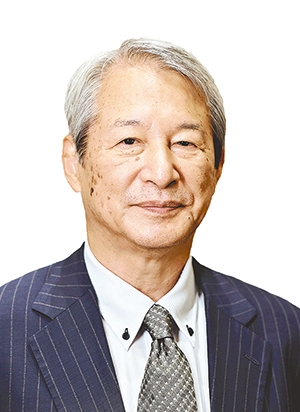
Takashi Shiraishi
Takashi Shiraishi is a scholar of Asian studies and distinguished university professor at the Prefectural University of Kumamoto, where he served as chancellor until the end of March 2024. Prior to that, he was president of the National Graduate Institute for Policy Studies from 2011 to 2017, and president of the Institute of Developing Economies, part of the Japan External Trade Organization, from 2007 to 2018.
The original article in Japanese appeared in the Jan. 26 issue of The Yomiuri Shimbun.
"Editorial & Columns" POPULAR ARTICLE
-

Violations of Subcontract Law: Major Automakers Must Eliminate Old Practices
-

Local Governments’ Tax Revenues: Devise Ways to Correct Imbalances in Tax Sources
-
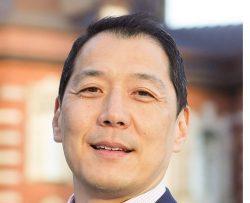
5 Japanese Business Dinner Mistakes to Avoid — and What They Taught Me About Business in Japan
-

Heavy Rains in Asia: Support for Victims, Flood-Control Measures Urgently Needed
-

Rice Coupons: A Misguided Approach to Countering Rising Prices
JN ACCESS RANKING
-
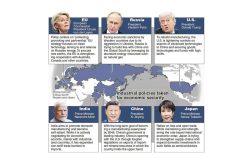
Tokyo Economic Security Forum to Hold Inaugural Meeting Amid Tense Global Environment
-
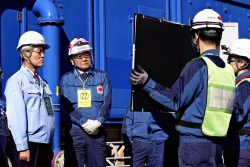
Keidanren Chairman Yoshinobu Tsutsui Visits Kashiwazaki-Kariwa Nuclear Power Plant; Inspects New Emergency Safety System
-
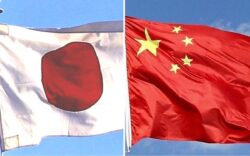
Imports of Rare Earths from China Facing Delays, May Be Caused by Deterioration of Japan-China Relations
-
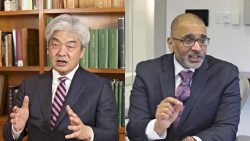
University of Tokyo Professor Discusses Japanese Economic Security in Interview Ahead of Forum
-
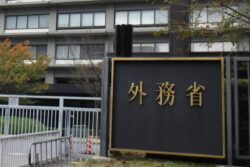
Japan Pulls out of Vietnam Nuclear Project, Complicating Hanoi’s Power Plans


